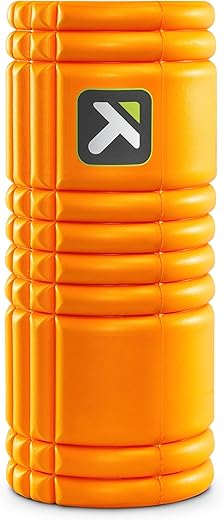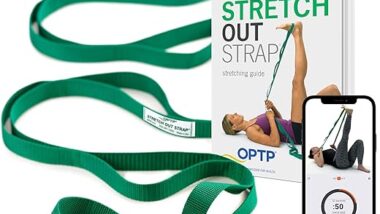In this step-by-step guide, we will explore how to effectively relieve muscle soreness using a TriggerPoint GRID Foam Roller. Foam rolling is a powerful self-myofascial release technique that not only helps reduce muscle tightness but also enhances recovery after workouts. Whether you’re an athlete looking to optimize your performance or someone seeking relief from everyday muscle discomfort, this guide will provide clear instructions to help you incorporate foam rolling into your routine for optimal results.
Understanding Foam Rolling: Benefits and Reasons to Get Started
Gather Your Equipment
Locate a flat, open area on the floor that allows for ample movement around you. Make sure the surface is clean and free of any obstacles that may cause distractions. Spread out a mat or towel beneath you for extra cushioning and support while using the TriggerPoint GRID Foam Roller. Keep the foam roller within arm’s reach, ensuring you have everything you need in one convenient spot to maximize your rolling experience.
Warm Up Your Muscles
Perform a light warm-up for 5-10 minutes before using the foam roller. Engage in dynamic stretching exercises such as arm circles, leg swings, or torso twists to activate your muscles. Incorporate light aerobic activities like brisk walking, jogging in place, or jumping jacks to elevate your heart rate and increase blood flow. Focus on movements that target the muscle groups you plan to roll, ensuring that your body is prepared for deeper muscle release and recovery.
Identify Sore Areas
Identify areas of muscle soreness or tightness in your body. Pay special attention to common regions such as your back, thighs, calves, and shoulders. Gently press on these areas with your fingers to locate any particularly tight spots. Observe any discomfort levels and mark these locations for future reference during your recovery or stretching routine.
Position the Foam Roller
Place the TriggerPoint GRID Foam Roller on the floor, ensuring it’s stable and won’t roll away. Position your body on top of the roller, making sure the sore area, such as your lower back or calves, is directly above the foam roller for effective pressure. Support yourself by placing your hands on the floor for balance or resting your feet on the ground to control your weight distribution. For instance, if you’re targeting your lower back, lean back slightly while keeping your feet flat on the ground; alternatively, if working on your quads, place your forearms on the floor and roll your body forward.
Apply Pressure
Slowly roll over the foam roller, allowing it to gently press into the sore area of your body. Adjust your position to find the most sensitive spots, using your body weight to control how much pressure is applied. Maintain a steady motion as you roll back and forth for 20-30 seconds, focusing on relaxing the muscles beneath the roller. Breathe deeply throughout the process to enhance relaxation and aid in muscle recovery.
Focus on Trigger Points
- Locate a trigger point by feeling for tight or sore areas in your muscles. Common spots include the neck, shoulders, and lower back.
- Pause when you identify a particularly tense area.
- Hold this position gently for 20-30 seconds.
- Breathe deeply, inhaling slowly through your nose and exhaling through your mouth.
- Visualize the tension melting away as you breathe out.
- Repeat if necessary, allowing each breath to help relax the muscle further.
Change Position
Address the next area of soreness by repositioning your body. Shift your weight to target the new muscle group, ensuring you maintain a comfortable posture. Begin rolling slowly over the new area, applying gentle pressure to relieve tension. After a few moments, pause and hold pressure on any particularly tight spots for 20 to 30 seconds before continuing the rolling process. Repeat this cycle for each new area you want to address, ensuring each muscle group gets the attention it needs.
Cool Down and Stretch
Cool down by taking a few moments to let your heart rate gradually decrease. Walk at a slow pace or gently move around to help your body transition from exercise to rest. Afterward, perform static stretching on the muscles you’ve just worked. Hold each stretch for 15-30 seconds, focusing on areas like your hamstrings, quadriceps, and shoulders to enhance flexibility and relieve soreness. Breathe deeply throughout each stretch, allowing your muscles to relax fully.
Final Tips for Recovery
In conclusion, using a TriggerPoint GRID Foam Roller is a simple yet powerful method to alleviate muscle soreness and enhance recovery. By incorporating this technique into my routine, I can effectively target tight spots, diminish tension, and ultimately promote better muscle health. Remember, consistency is key, so make foam rolling a regular part of your wellness journey for optimal results.
Essential Equipment List
Effective Techniques Unveiled
Step-by-Step Guide to Maximizing Your Foam Rolling Experience
- Start with Basic Techniques: Begin by learning the basic rolling technique. Place the TriggerPoint GRID Foam Roller under the muscle group you want to target, and gently roll back and forth for 30-60 seconds. Focus on areas like your calves, thighs, and back
- Use Body Weight for Pressure: Adjust the pressure by shifting your body weight. If you want more intensity, lean into the roller more; for less pressure, shift your weight to the opposite side
- Identify Tight Spots: As you roll, pay attention to any tight or sore areas. When you find a trigger point, pause on that spot for 15-30 seconds to help release tension
- Incorporate Breathing Techniques: Remember to breathe deeply while rolling. Inhale as you roll over tender areas and exhale as you release the pressure. This helps relax your muscles
- Cool Down with Stretching: After using the foam roller, follow up with gentle stretching of the muscles you worked on to enhance flexibility and prevent soreness






I recently started using the TriggerPoint GRID Foam Roller after my long runs, and wow, it’s like magic! I used to be so sore for days, but now I can roll out my quads and calves and feel so much better. Highly recommend it to anyone who runs or does intense workouts. It’s seriously a lifesaver! 🏃♂️💨
I totally get the whole foam rolling thing, but I wonder if it really makes a difference for everyone. Some friends say it’s a game changer while others feel like it’s just a fancy way to torture themselves. What do you guys think? Is it worth the effort for everyone? 🤔
Great question! Everyone’s body reacts differently, and what works wonders for one person may not have the same effect on another. It’s all about finding what feels good for you and your recovery routine. Keep experimenting!
Does anyone have tips for using the foam roller on the upper back? I’ve been trying to get into it, but I can’t seem to find the right position to relieve some of that tightness. Any tricks to make it more effective?
Absolutely! For the upper back, try lying on the foam roller horizontally (so it’s perpendicular to your spine) and gently roll from your shoulder blades to the base of your neck. You can also place your arms overhead to open up the chest, which might help ease some of that tightness. Give it a shot!